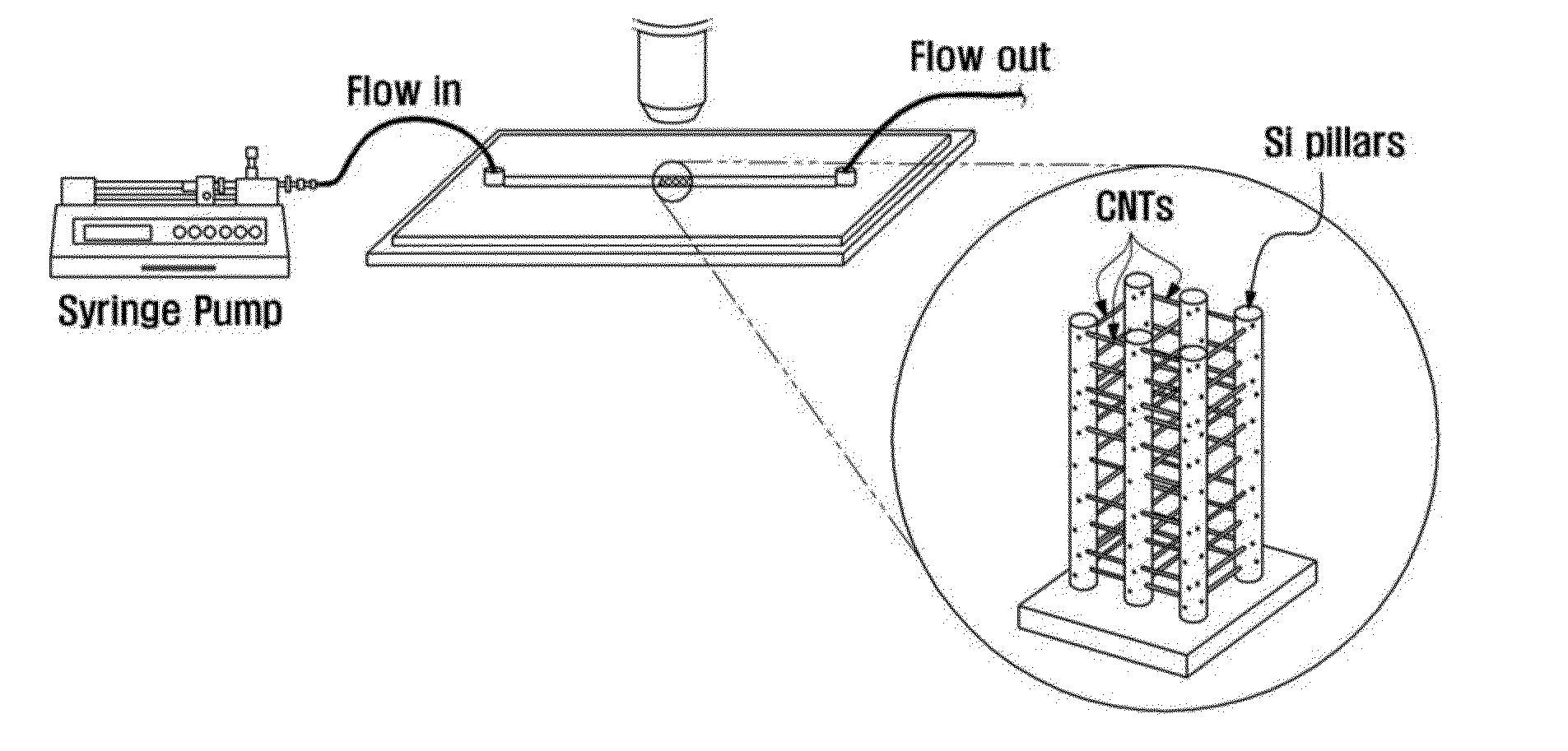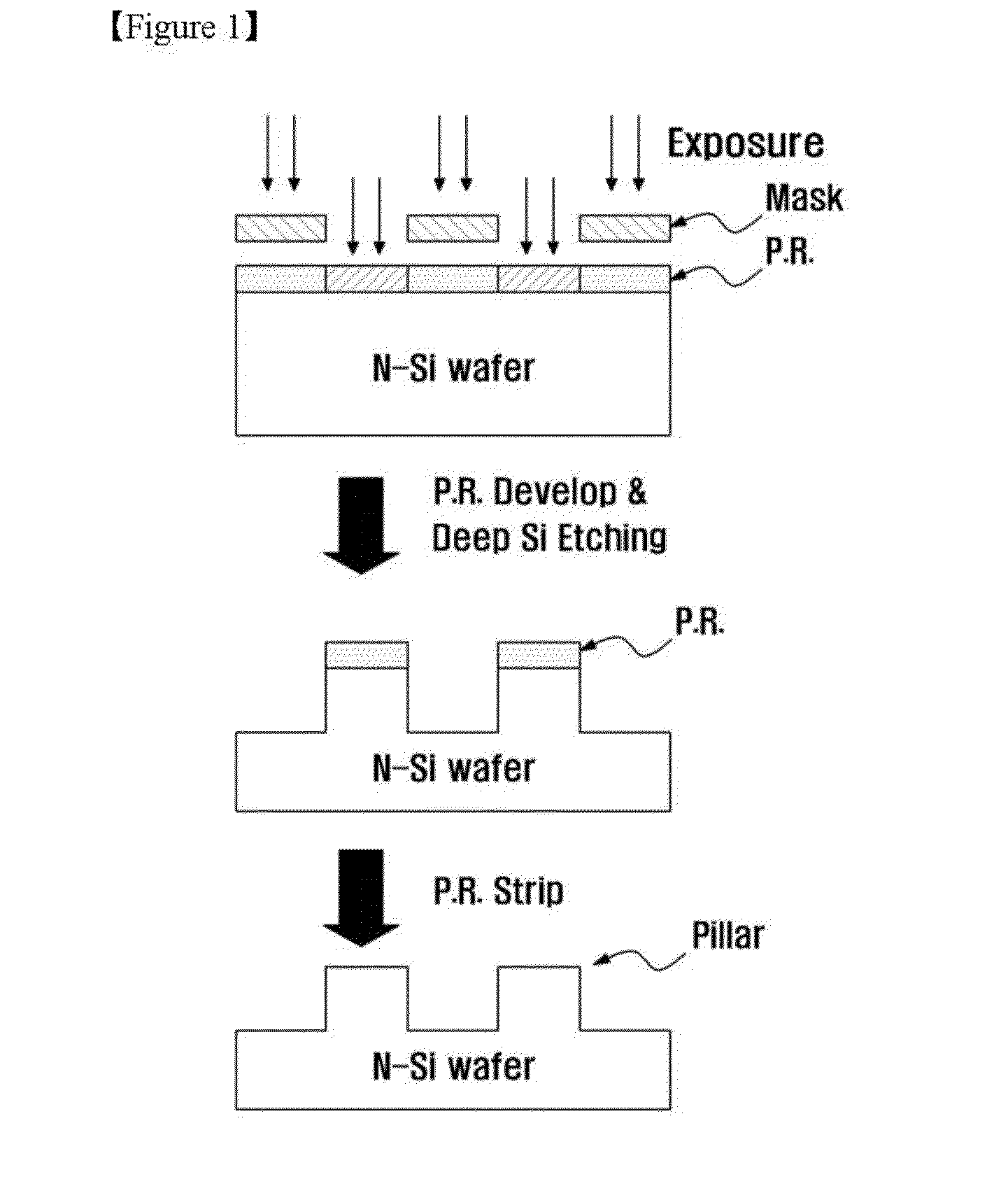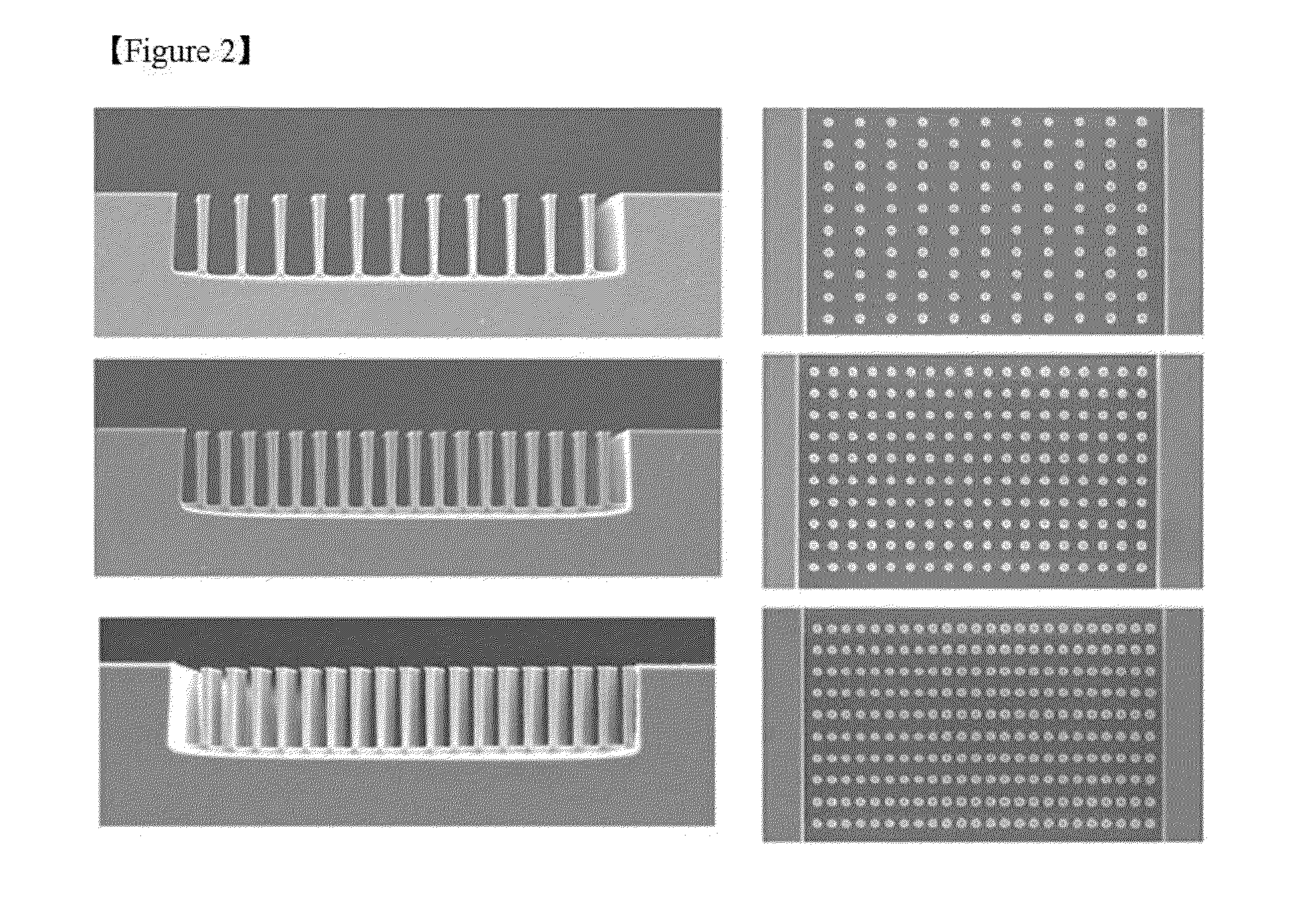Microfluidic filter using three-dimensional carbon nanotube networks and preparation method thereof
a carbon nanotube and network technology, applied in the field of microfluidic filters, can solve the problems of poor adhesion between carbon nanotubes and substrates, difficult application of three-dimensional networks to a solution process, and inability to filter specific particles, etc., to achieve high strength, maintain the structure, and increase the reactive surface area
- Summary
- Abstract
- Description
- Claims
- Application Information
AI Technical Summary
Benefits of technology
Problems solved by technology
Method used
Image
Examples
example 1
Synthesis of Three-Dimensional Carbon Nanotube Networks with Different Densities According to Spacing Between Silicon Pillars
[0063]The present invention is characterized in that three-dimensional carbon nanotube networks with various densities can be synthesized depending on the spacing between silicon pillars and the height of silicon pillars even under the same conditions. A p-type Si wafer was etched by general photolithography and the Bosch process to form silicon pillars having a height of 28 μm and a diameter of about 3 μm. The silicon pillars were spaced apart from each other at intervals of 2.65 μm and 4.25 μm. Next, the etched Si wafer was cleaned with acetone, ethanol and deionized water, treated with piranha solution for 30 min to modify the surface with —OH, and washed with deionized water. Then, an ethanolic solution of Fe(NO3)3.9H2O (Junsei) was mixed with an aqueous solution of Mo (ICP / DCP standard solution, 10 mg / mL Mo in H2O, Aldrich) to prepare a bimetallic catalys...
example 2
Ozone Treatment by Atomic Layer Deposition (ALD)
[0067]The hydrophobic carbon nanotubes were treated with ozone by atomic layer deposition (ALD). The ozone treatment converted the hydrophobic carbon nanotubes into hydrophilic ones. An atomic layer deposition system (Cyclic 4000, Genitech, Taejon, Korea) was used, and Ar gas was used as a carrier or purging gas to move two substances. Oxygen was fed and a UV lamp was turned on for 360 sec to generate ozone to which the carbon nanotubes were exposed. As a result of the ozone treatment, the surface of the carbon nanotubes was modified with —OH (hydrophobic).
example 3
Al2O3 Coating by Atomic Layer Deposition (ALD)
[0068]The synthesized three-dimensional carbon nanotube networks were coated with Al2O3 by atomic layer deposition (ALD). The Al2O3 coating led to an increase in the strength of the three-dimensional networks, which maintained the three-dimensional network structures even in a fluid. The three-dimensional carbon nanotube networks having undergone Al2O3 coating were used to prepare a microfluidic chip.
[0069]After the sample was placed in an ALD chamber, the surface of the carbon nanotubes was exposed to Al(CH3)3 and water. The exposure was conducted at 30° C. and 20° C. At each temperature, Al(CH3)3 was purged for 2 sec, Ar was purged for 20 sec, water was fed for 1 sec, and Ar was purged for 5 sec. After completion of the reaction, Ar was allowed to flow to maintain the pressure at 300 mTorr.
[0070]FIGS. 7 and 8 show front and side images of the three-dimensional carbon nanotube networks after ALD coating, respectively. FIG. 9 is a TEM im...
PUM
| Property | Measurement | Unit |
|---|---|---|
| height | aaaaa | aaaaa |
| height | aaaaa | aaaaa |
| aspect ratio | aaaaa | aaaaa |
Abstract
Description
Claims
Application Information
 Login to View More
Login to View More - R&D
- Intellectual Property
- Life Sciences
- Materials
- Tech Scout
- Unparalleled Data Quality
- Higher Quality Content
- 60% Fewer Hallucinations
Browse by: Latest US Patents, China's latest patents, Technical Efficacy Thesaurus, Application Domain, Technology Topic, Popular Technical Reports.
© 2025 PatSnap. All rights reserved.Legal|Privacy policy|Modern Slavery Act Transparency Statement|Sitemap|About US| Contact US: help@patsnap.com



